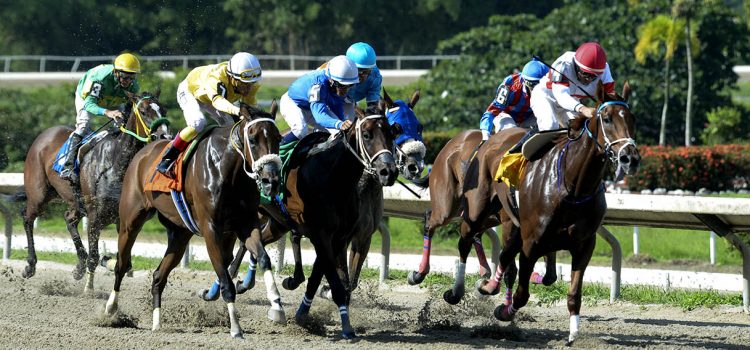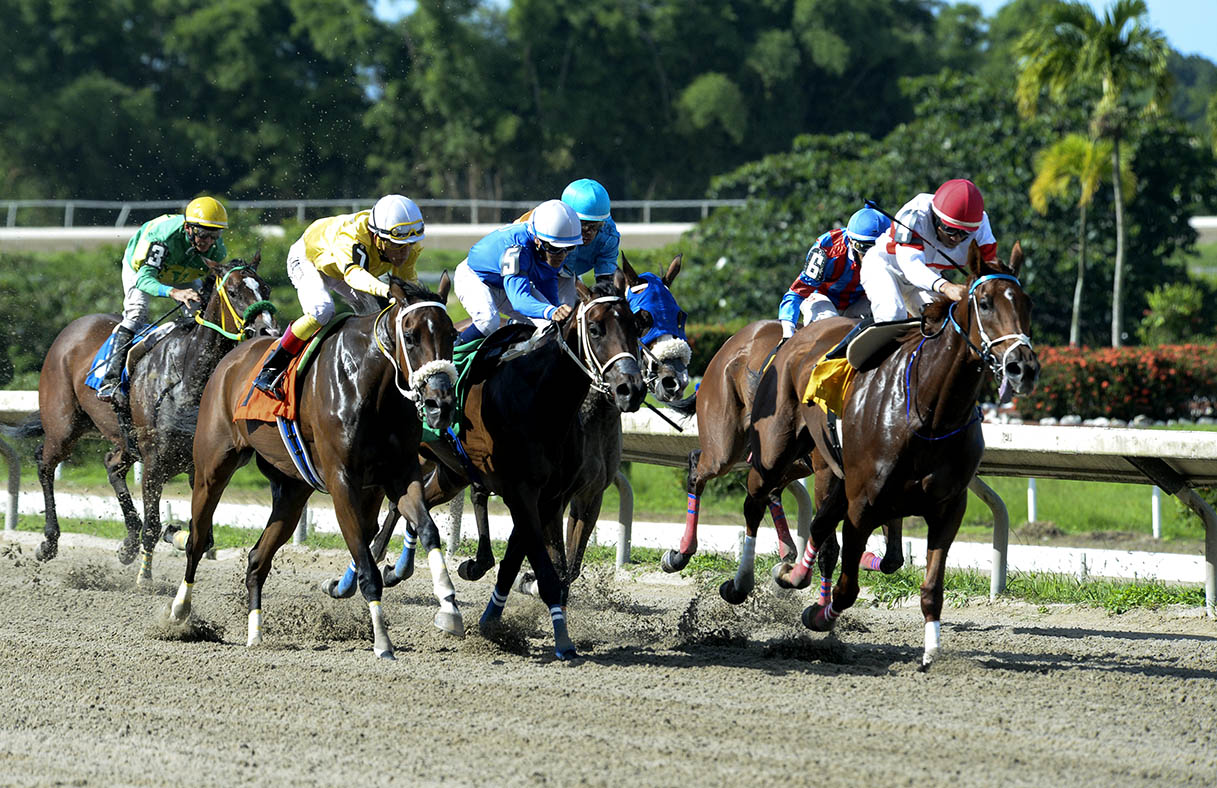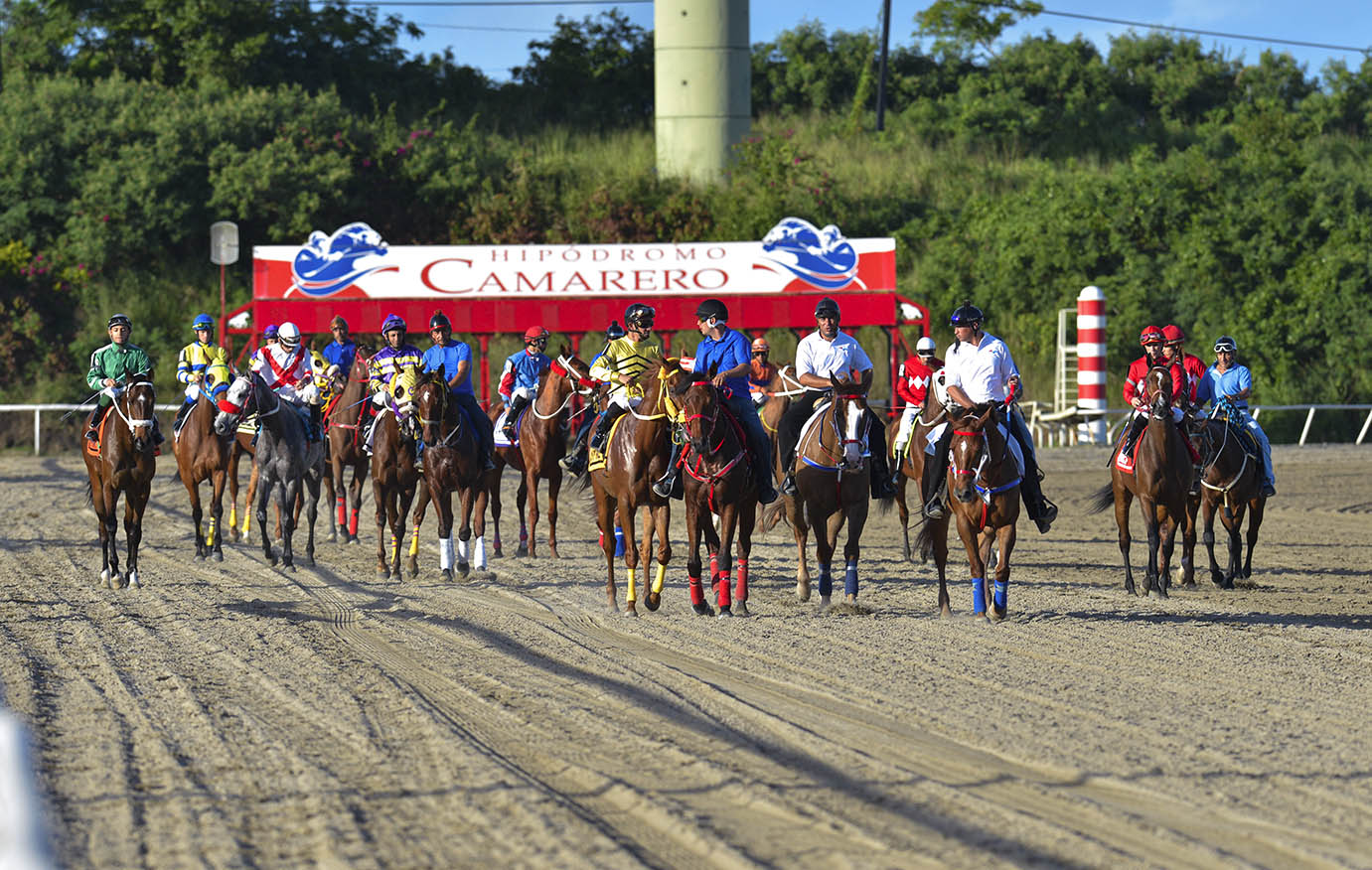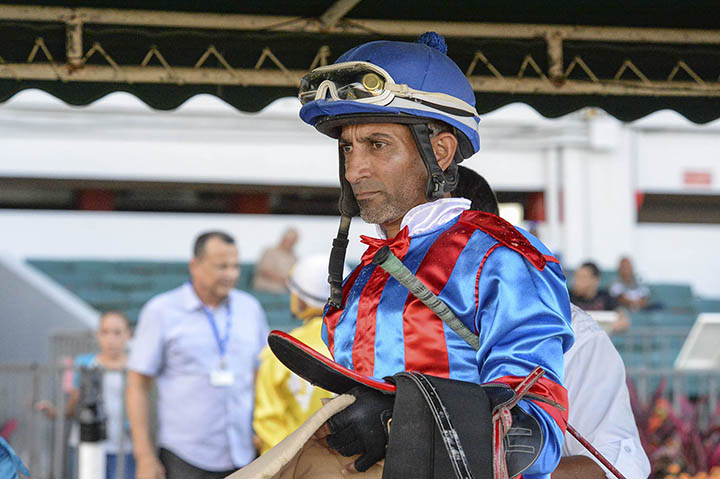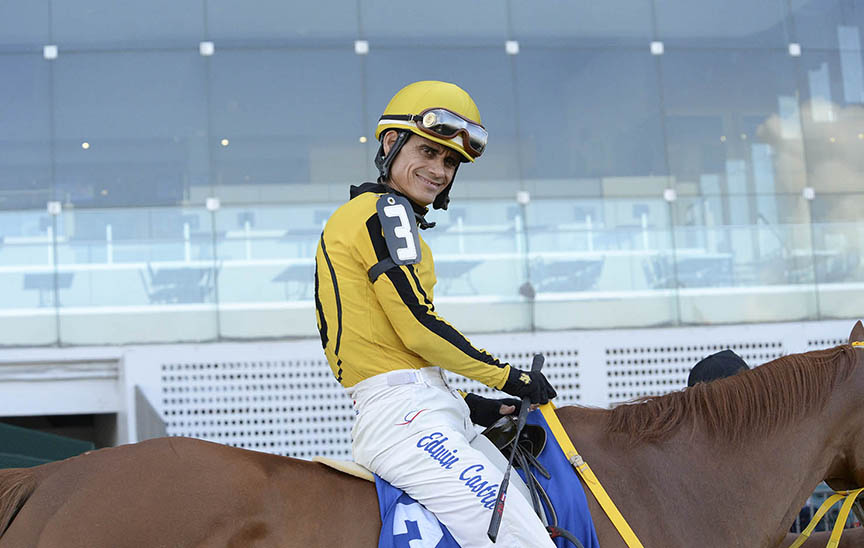Puerto Rican jockeys have proven their dominance
for decades at top racetracks in the world.
Infectious energy, the majesty of the thoroughbreds, jockeys wearing vibrant silks, and stunning park-like grounds with El Yunque mountains as a backdrop is the perfect way to describe the setting at Camarero racetrack.
If you enjoy horse racing, or just want to spend a few exciting hours during your vacation in Puerto Rico– than add this on your To-Do list.
Grab your binoculars and sunscreen for a fun-filled day of fresh air and adrenaline, and hopefully you’ll leave with some extra money in your pocket.
“To see a live race is very different than seeing it on TV,” said Alejandro Fuentes, executive vice president at Camarero Inc., the Puerto Rican company that manages the racetrack and horse racing business on the island. “You get to hear the fans cheering for their favorite horse and the sound of the horses galloping on the track; it’s truly exhilarating.”
Camarero is the island’s only horse racing track located 15 minutes from the Isla Verde hotel sector and a 20 minute drive from San Juan taking Route 66. There is plenty of parking, admission is free and the norm is casual attire.
Back on Track
Race days at Camarero are Thursday, Friday, Saturday, and Sunday with post time at 2:50 p.m., and a fifth day will be added soon. However, Sunday is the perfect day to go for people watching.
If it’s your first visit to a racetrack, you may get a more rewarding experience finding a spot where the entire track can be seen. The horses are paraded about 10 minutes before each race prior to trotting off to the starting gate. You sit outdoors at the grandstand –which is an open air multi-leveled seating near the center of the action where you can watch the parade, race, and winner circle picture taking up close and personal. Kids, especially, will enjoy this part of the track.
The Clubhouse and Terrace Restaurant, THE place where horse owners and anybody who simply preferred to leisurely eat a meal in air conditioning while watching the races through its huge windows, is currently closed and expected to be reopened soon.
Learning the ins-and-outs of how to bet before you arrive at Camarero will save an incredible amount of time. So get a racing program, pick your horse of choice, and hurry to the betting window and hope the odds are in your favor. Stick to a budget. A racetrack can be one of the most affordable entertainments around.
There is important information you need to know before you approach the clerk’s window: the race number, dollar amount of your bet, type of bet and number (NOT name) of the horse(s) you’re betting on. The types of straight wagers are win, where you pick a horse to finish first; place, where you select a horse to finish first or second and show, where you pick a horse to finish first, second, or third.
Exotic wager bets include exacta, where you pick the first and second place finishers in the exact order and trifecta, where you pick the first, second, and third place finishers in the exact order; and the multi-race bets that include daily double (pick the winner in two consecutive races), pick three (choose the winner in three consecutive races), pick four, pick five and pick six referred to as el Poolpote in Puerto Rico.
Payouts are determined by the number of horses in the bet, the odds, and the wager amount.
Daily wagering at Camarero currently fluctuates $400,000 to $500,000.
Its monthly event “Night at the Races,” where the race card begins early, followed by a live band is expected to make a comeback soon. This event, held every Friday night, attracts a large crowd and high number of wagering.
“It is like a whole world in itself, an entire industry revolves around the track activity,” said legendary racetrack announcer Norman H. Davila, who is one of the faces and voices of Puerto Rico horse racing.
There are more than 1,000 employees and contractors at the racetrack, especially in the stables – from hot walkers, grooms and trainers to blacksmiths and vets.
“When you add up indirect jobs there are about 8,000 that include owners and employees in over 400 off track wagering agencies island-wide, the horse breeding farms, producers and distributors of food,” said Fuentes.
An island full of world-class jockeys
In horse racing there are two types of athletes: the horse and the jockey. Puerto Rico has had its share of excellent thoroughbreds that have won important international races like the Caribbean Classic. Half of the 600 horses that normally are active on the island are native specimen while the rest are imported mainly from the U.S. mainland. But more impressive are our exceptional Puerto Rican jockeys who have proven their dominance for decades at top racetracks in the world.
Camarero’s horse racing vocational school, affiliated to the Puerto Rico Horse Racing Administration, is where trainers, blacksmiths, and jockeys are trained. This school graduates about 15 jockeys a year that begin their racing careers as apprentices. In the 1960’s and 1970’s, several young apprentices ventured out into the racing circuits in Florida, New York and California, three states that have some of the most important racetracks in the world, in order to test their luck and begin demonstrating their talent.
Puerto Rico’s pioneer adventurer was jockey Eddie Belmonte who attracted attention in the New York racing circuit and was the first Puerto Rican to win a race (Preakness) of the Triple Crown aboard ‘Personality’ in 1970.
Jockey Angel Cordero followed suit and dominated for years the racing circuit in New York at Saratoga, Acueduct, and Belmont Park racetracks. He competed for 30 years (1962-1992) and was the jockey with the most earnings on four occasions in the U.S., Canada and Puerto Rico. Cordero, referred to as the King of Saratoga, has the most wins in Triple Crown events including three Kentucky Derby victories.
John Velazquez has been active in New York since he left at the young age of 18 in 1990. He is also another Puerto Rican superstar in the horse racing scene.
Velazquez has been a leader in earnings for four consecutive years (2001-2004) and has won two races of the Triple Crown – the Belmont Stakes in 2007 and the Kentucky Derby in 2011.
In the past two years, besides Velazquez, there have been other Puerto Rican jockeys who have stood out in the U.S. mainland horse racing panorama – brothers Irad Ortiz and Jose Luis Ortiz. The Ortiz brothers have been ranked among the top five jockeys in the U.S. mainland in overall earnings.
In 2017, the 24 year-old Jose Luis won the Eclipse award for being the most outstanding jockey in the U.S. for highest earnings ($22.9 million) while the 25-year-old Irad was the jockey with most wins.
By winning an Eclipse Award, Jose Luis has joined the exclusive club of Cordero and Velazquez, an honor comparable to winning a MVP award in Major League Baseball.
Juan Carlos Diaz, the King of Camarero
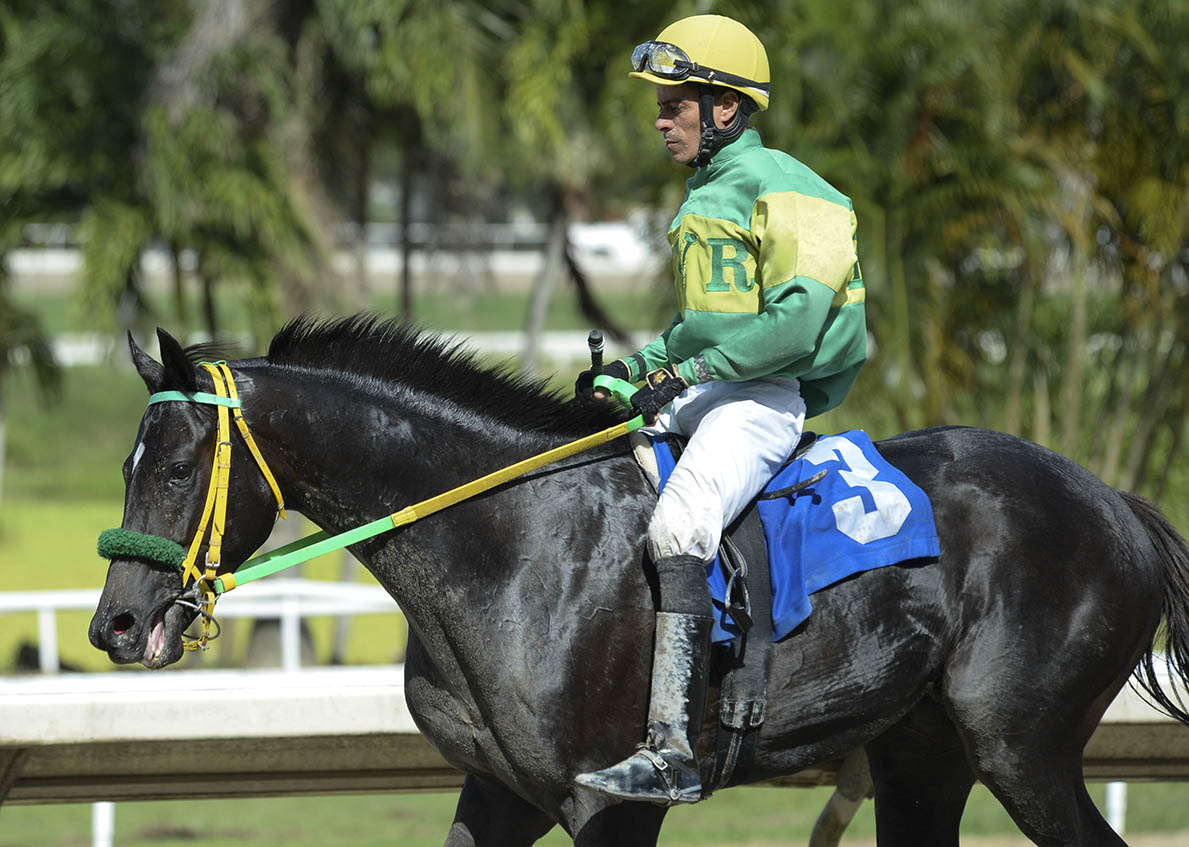
Nevertheless not all stellar jockeys migrate to the north.
When at Camarero racetrack and making a wager you may see names like Edwin Castro, Hector Berrios, Javier Santiago, Wilfredo Rohena, among others on the racing form that offer a guarantee that the horse will be in good hands and could possibly be a winner.
However the most outstanding of the local crowd is currently Juan Carlos Diaz, a jockey that holds the title of having the most wins in Puerto Rico’s horse racing history with more than 4,700 victories under his belt. He has also been the leader in victories and earnings for 17 straight years showing his absolute dominance on the island.
“I have had the opportunity to ride in the U.S. but have decided to stay in Puerto Rico because I have led for many years here and am economically solid,” said the 40-year-old Diaz. “I have my home and family in Puerto Rico and my son is enrolled at the jockey school.”
Besides Diaz’ family life, that has a major role in his decision to remain in Puerto Rico, there are other factors.
Diaz was raised near the ocean – not riding sea horses but rather fishing, scuba diving and surfing, even though he loves horses. His passion for surfing and boats continues despite the fact he has to be at the track at 10 a.m. to then race from 2 p.m. to 6 p.m. four days a week. But he does find a way to escape to the beach to ride those waves.
“Sometimes after the morning workouts at the track, if there are waves, I escape to surf for an hour in Luquillo at La Pared or La Selva beach and then return to the racetrack. Besides the fact that I love the ocean and it relaxes me, it’s a good workout and provides balance, which helps me as a jockey.”
Come and witness the passion of Puerto Ricans as they cheer on riders like Diaz and play the Poolpote jackpot, and if you are lucky to pick all six winners of the afternoon’s race card you can win lots of money. Feel the excitement of seeing your horse fight for the lead and who knows maybe you’ll have beginner’s luck.

